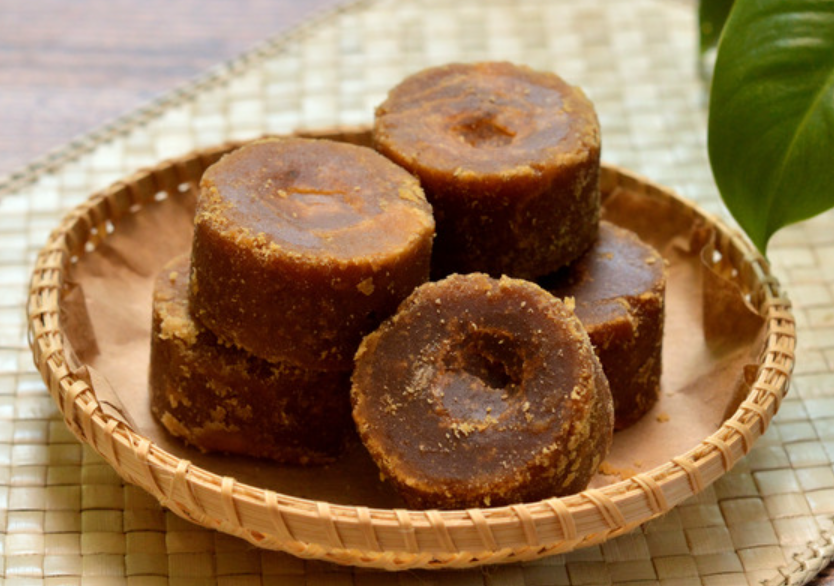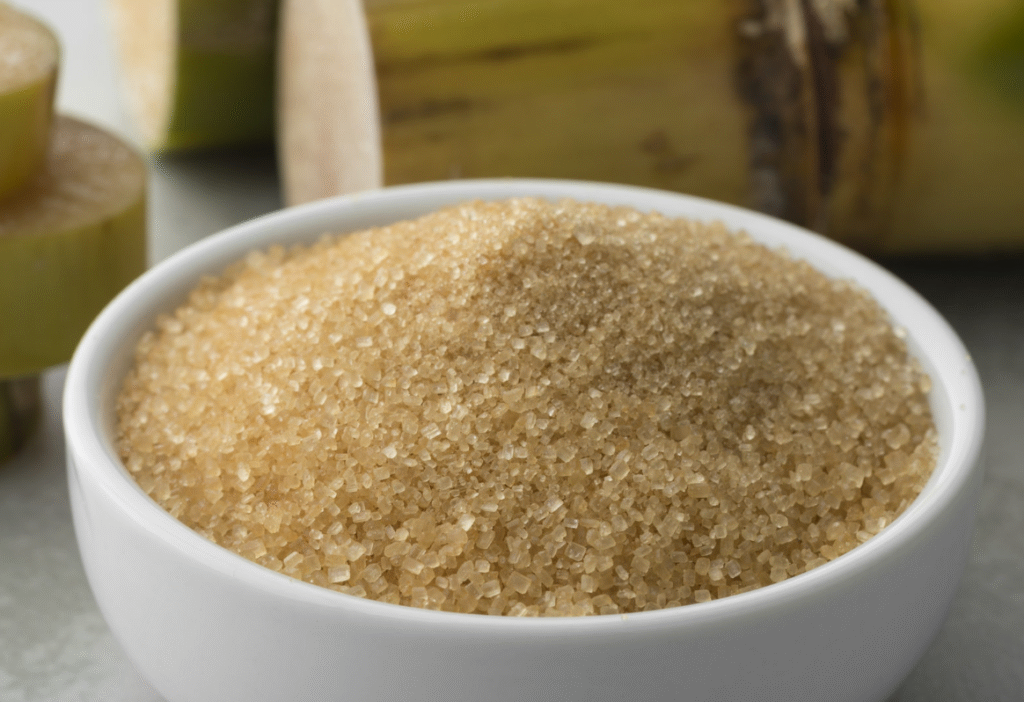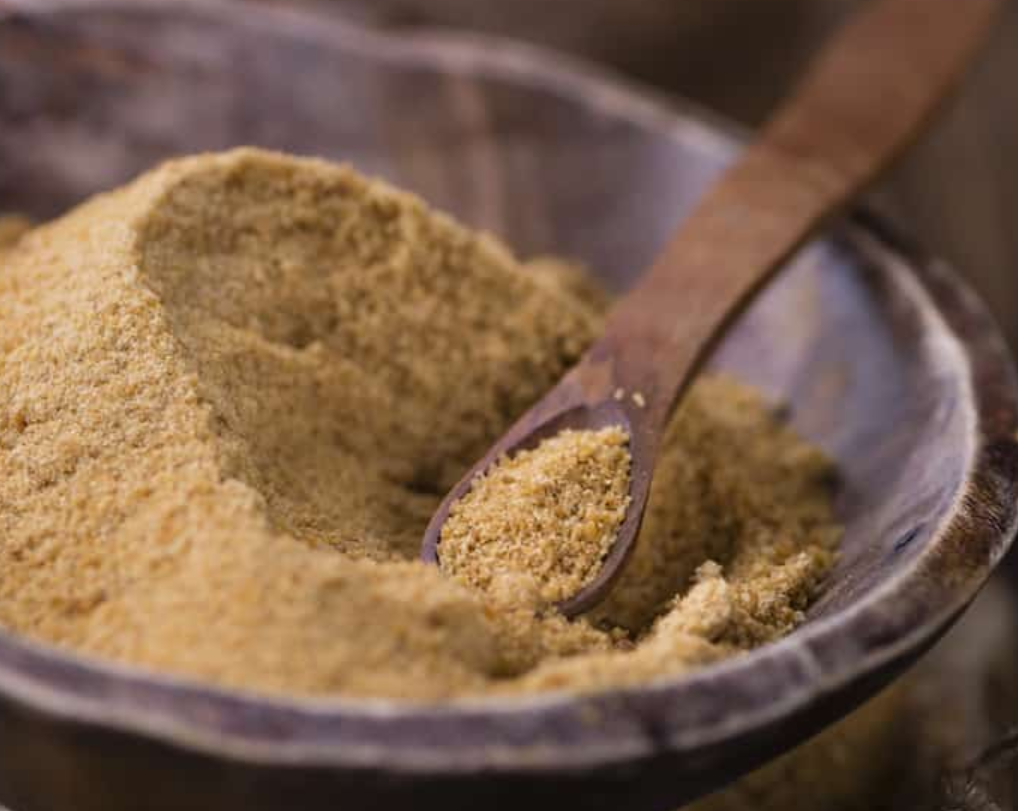Table of Contents
Are you wondering what the difference is between palm sugar and cane sugar? You may have seen recipes calling for palm sugar and are curious why it is used, or even if there really is much of a difference between the two. In this post, we’ll take a detailed look at how these two types of sugars compare to each other: from their flavor profiles to health benefits to sustainability!
We’ll cover all that plus give tips on how best to use them as well as which one will work best for your baking needs. With our helpful guide, you’ll be able to make an informed decision when choosing either palm or cane sugar for your next sweetening project.
What is Palm Sugar?

Palm sugar is a traditional, unrefined sugar made from the sap of certain palms such as the toddy palm or palmyra palm. It has a light brown color and granular texture that resembles brown sugar, with slightly more moisture. Palm sugar has a unique flavor profile that’s sweet but not cloying, and it contains minerals like iron, zinc, potassium, and magnesium which are beneficial to health.
What is Cane Sugar?

Cane sugar is extracted from raw cane juice and then processed into white crystals. It typically lacks any added flavors or nutrients, though it does have some trace vitamins and minerals. Cane sugar has a much sweeter taste than palm sugar and can be used in baking recipes where you want a pure sweet flavor.
Nutritional Composition
Calories, Carbs, Protein, and Fiber Content
Both palm sugar and cane sugar provide 4 calories per gram, making them virtually identical in this regard. Palm sugar does contain a slightly higher amount of carbohydrates and fiber than cane sugar, however the difference is not significant. On the other hand, both sugars are equally low in protein content.
Micronutrients Compared
When it comes to micronutrients, palm sugar is the clear winner as it contains vitamins and minerals that are absent in cane sugar. These include iron, zinc, potassium, magnesium, and other trace elements like calcium and manganese.
Potential Health Benefits
Palm sugar has a lower glycemic index than cane sugar, making it easier to digest and absorb. This means that it will not cause your blood sugar levels to spike as quickly as cane sugar, which is beneficial for those who need to regulate their glucose intake. Additionally, the minerals present in palm sugar can help boost metabolism and provide important nutrients for the body.
Production Processes and Environmental Impact

How Are They Made?
Palm sugar is made by harvesting the sap from palms and boiling it down until crystalized. It’s a much more labor-intensive process than cane sugar and requires skill to ensure that the final product has a consistent texture, quality, and flavor.
Cane sugar is produced on an industrial scale and involves grinding up raw cane stalks to extract the juice. This is then filtered and boiled until it crystallizes into white sugar crystals.
Carbon Footprint Comparison
Palm sugar production is a more sustainable process than cane sugar, as it requires less energy to produce. Additionally, palm sugar also generates fewer carbon emissions during its production compared to cane sugar.
Potential Contamination Risks
When it comes to potential contamination, cane sugar may pose a greater risk as it’s produced on an industrial scale and often contains chemicals or preservatives that are not present in palm sugars.
Sustainability Considerations
Palm sugar is the more sustainable choice out of the two, as it requires less energy to produce and has a lower carbon footprint. Additionally, there’s no risk for contamination with palm sugar since it’s produced in small batches.
Taste & Texture Comparison
Sweetness Levels
Palm sugar has a less intense sweetness than cane sugar, making it a better choice for baking recipes where you don’t want a cloying flavor. Cane sugar has a pure sweetness that can easily overpower other flavors in your dish, so use sparingly when needed.
Color & Appearance Differences
Palm sugar has a darker color than cane sugar and takes on a caramel or butterscotch hue when heated. Cane sugar will remain white and crystalline even when cooked.
Pros & Cons of Each Option
Palm Sugar
Pros: More complex flavor profile, lower glycemic index and contains minerals & vitamins. Lower carbon footprint, less energy required for production.
Cons: More expensive, labor-intensive process of production.
Cane Sugar
Pros: Easier to find and relatively cheaper. Produced on an industrial scale with consistent quality & texture.
Cons: Higher glycemic index and no vitamins or minerals present. Greater risk for contamination due to industrial production process. High carbon footprint and energy consumption.
Which One Is Healthier?
While both sugars offer a sweet flavor, palm sugar has more nutritional benefits and is the better choice for those looking to regulate their blood sugar levels. Its complex flavor adds depth to dishes and its lower carbon footprint makes it the more sustainable option. However, if you’re on a budget or want a consistent sweetness level in your baked goods, then cane sugar is the better choice. Ultimately, it’s up to you to decide which one is healthier for your needs.
Factors to Consider When Choosing Between Them
When deciding between palm sugar and cane sugar, there are a few factors that you should consider. The first is the flavor profile—palm sugar has a more complex sweetness while cane sugar has a purer taste. Additionally, consider if the recipe requires baking or cooking as palm sugar performs better in these applications due to its lower glycemic index and darker color. Finally, consider the environmental impact of each option, as palm sugar has a lower carbon footprint and requires less energy to produce than cane sugar.
Frequently Asked Questions | Palm Sugar vs Cane Sugar
1. Can I use palm sugar as a direct replacement for cane sugar?
Yes, in most cases palm sugar can be used as a direct replacement for cane sugar. However, due to its lower sweetness you may need to adjust the amount that is used depending on how sweet your recipe calls for the dish or dessert to be.
2. What are some other uses of palm sugar?
Palm sugar can not only be used for baking and cooking but also has many other uses such as sweetening beverages like coffee or tea, adding flavor and sweetness to savory dishes such as curries or using it in homemade jams and marmalades.
3. Is palm sugar more expensive than cane sugar?
Palm sugar is typically more expensive than cane sugar as it is unrefined and therefore has a shorter shelf life. However, its superior taste and health benefits often make it worth the extra cost.
The Bottom Line
Palm sugar and cane sugar both offer a sweet flavor, but palm sugar is the healthier option due to its lower glycemic index and more complex taste. If you’re looking for a sustainable option or need to regulate your blood sugar levels, then palm sugar is the better choice. However, if you’re on a budget or need a consistent sweetness in your recipe, then cane sugar is the way to go.
Read more at Ohsnap Cupcakes!